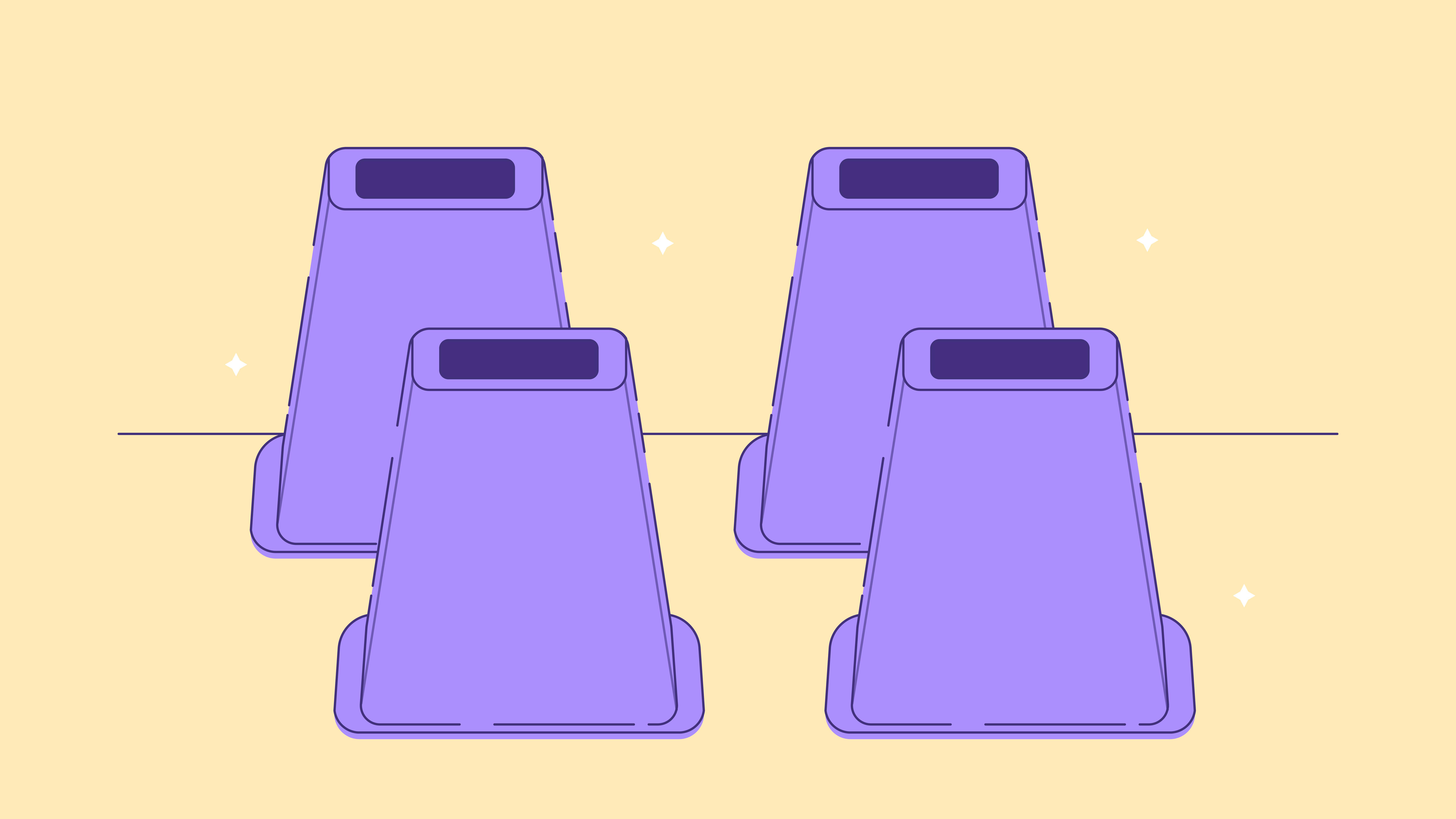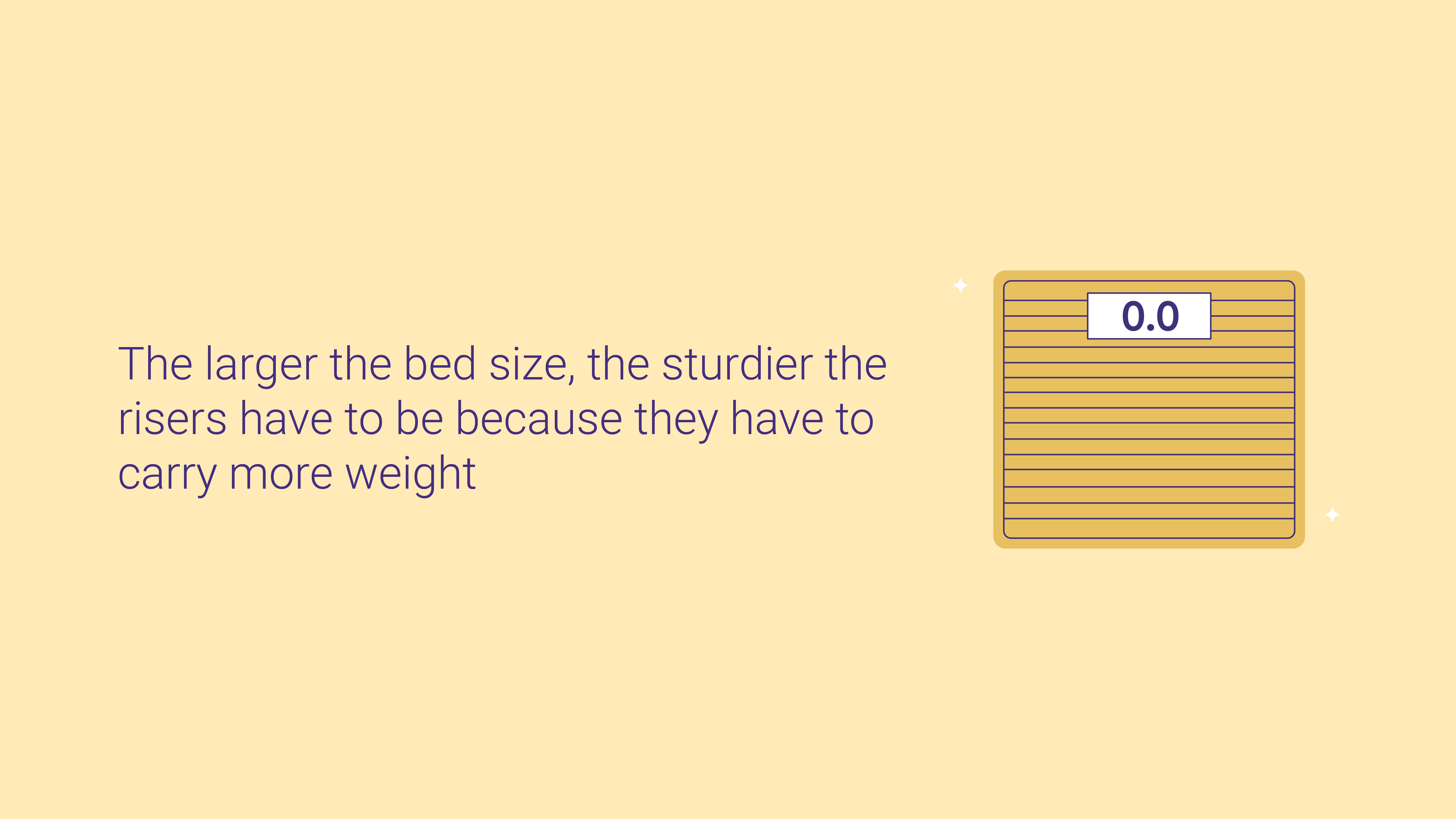
Are Bed Risers Safe?

- Bed risers are a safe and effective way to elevate your bed, providing numerous health benefits, especially for individuals who may have difficulty getting in and out of bed, such as older adults.
- Different types of bed risers, including screw-in, stackable, and adjustable versions, cater to various bed frame styles and height preferences, ensuring stability and safety.
- When shopping for bed risers, it’s crucial to consider factors such as mattress size, desired bed height, and weight capacity to ensure that the chosen risers are compatible with the bed frame and can effectively support the weight of the bed and sleeper.
As long as you install them correctly and choose the ones suited for you and your bed, bed risers are very safe. Also, elevating your bed has many health benefits and can significantly improve your quality of life and sleep.
Raising your bed to the correct height for you makes it easier to get in and out of bed. This is especially important for older sleepers who can’t lower themselves into a low bed or climb into a high bed anymore. Finding the proper risers for your bed depends on what kind of bed you have, how high you need to raise your bed, and how much weight is placed on the risers.
Different Kinds of Bed Risers
There are many different types of beds, which means there are several different types of risers. Risers are made from a variety of materials, including plastic, wood, rubber, and metal.
There are also a variety of ways these risers are designed and installed. The best set of bed risers for you are sturdy and fit your bed frame.
We recommend buying risers in sets whenever possible. This ensures they are the same size and height, preventing your bed from being at a tilt.
Below we cover the three most common kinds of bed risers and explain the pros and cons of each. The three varieties below are made out of a range of materials and each has different height options.
Screw-In Bed Risers
Screw-in bed risers are designed to replace the legs the bed initially had. You install these by unscrewing the original legs, then screwing in the taller bed risers. These screw-in versions are most often solid wood bed risers. This version is sturdy and easy to install.
Stackable Bed Risers
This type of bed riser got its name because you can stack each riser on top of each other when you aren’t using them. To install, place one riser under each of the legs of your bed frame. They have a broad base that tapers to a size that fits the legs of your bed.
As long as the legs of the bed frame fit snugly into the risers, this is a very safe and secure way to increase the height of the bed.
Adjustable Bed Risers
For sleepers who need to raise or lower the height of their bed, adjustable bed risers are a great fit. They look similar to stackable risers, with a broad base to provide stability. Unlike the stackable risers, a set of these risers has eight pieces, not just four.
The first set of four pieces are the base pieces, and each has a broad bottom. The second set of four pieces fit securely into the four base pieces, giving you the option of increasing your bed’s height if necessary.
With adjustable risers, the material they are made of is essential. We recommend avoiding plastic versions unless the plastic is very heavy-duty and has a high weight rating.
Bed Riser Safety for Different Bed Frames
If you have a bunk bed or a platform bed, the safety procedures are different from standard bed frame sizes and dimensions. So let’s take a closer look at these two unique bed styles and how you can safely use risers with each of them.
Bunk Beds
Because the dimensions and sizes of bunk beds are taller and less steady than a standard bed frame, choosing the proper risers for them is incredibly vital. A sturdy foundation is fundamental, so look for risers made of metal or solid wood. Also, make sure your risers have a broad base and the legs of the bed frame fit securely in the top of the risers.
Platform Beds
Platform beds are usually lower to the ground than standard bed frames, so bed risers don’t pose much risk for them. However, it is still important to find risers that are well suited to this frame.
Screw-in risers are the best choice for a platform bed: they are aesthetically pleasing and secure. Adjustable or stackable risers would work with this frame, as long as they are the right size and are made of sturdy materials.
What to Consider When Shopping for Bed Risers
We’ve seen how the different styles of risers and beds affect your safety. Now, let’s take a look at what else you need to consider while shopping for bed risers. The three primary considerations are:
- Mattress size
- Bed height
- Weight capacity
Once you understand these aspects of your bed frame, finding the perfect set of risers should be easy!
Bed Size
The larger the bed size, the sturdier the risers have to be because they have to carry more weight. King size mattresses and larger beds may require six risers instead of four because the frame needs center supports. For big beds especially, it is crucial to invest in risers made of sturdy materials that can support large amounts of weight.
Bed Height
Increasing your bed height can be helpful if you’re an older person or living with a condition like arthritis and want to slide more easily out of bed.
How much higher do you want your bed frame? If you need to increase your bed’s height by 6 inches, a 3-inch riser set won’t be tall enough. Keep in mind that the taller the riser, the less steady the bed frame becomes.
Weight Capacity
Some materials aren’t sturdy enough to bear heavy weights for extended periods. So when looking for risers, it’s vital to pay attention to their weight limit and what materials they are. The best materials for risers are metal, heavy-duty plastics, and wood.

FAQs
How high should your bed be off the floor?
The best height for your bed frame depends on the height of the sleeper. You can find out if your bed frame is the right height for you by sitting down on the edge of your bed with your feet resting flat on the floor. If your knees are level with your hips, your bed is a good height for you.
However, if your knees are higher or lower than the level of your hips, your bed frame is not the right height. An excellent standard bed frame height for most sleepers is between 16 and 24 inches.
Can you put a bed frame with wheels on risers?
There are bed risers specially designed for bed frames with wheels. These risers have a rectangular top instead of a square top—this allows the wheel to fit snugly into the riser.
For those wanting to increase the height of their bed frame on wheels, it is vital to find risers explicitly made for this kind of bed frame. Do not make do with just any set of risers.
Can you use bed risers without a frame?
It is not a good idea to use bed risers without a bed frame. The main reason for this is that there is nowhere to secure the risers without a frame. For instance, if you place risers under the four corners of your box spring, the risers may shift as you get in and out of bed or as you shift positions at night. To be safe, secure the risers directly to your bed or bed frame.
Can you use bed risers with a headboard?
You can use bed risers to increase the height of your headboard. This works best with free-standing headboards—this means your headboard is not directly attached to the bed frame. Simply find risers that are compatible with your headboard and bring the frame to your desired height.
How many risers do you need for a king-size bed?
King beds are quite large and heavy, meaning they need more support than smaller beds. Therefore, most king beds require six bed risers instead of four.
First, place a riser at each corner of the bed. Then place two more towards the middle of the mattress, each between the centerline and the edges. The extra risers fully support the weight of the mattress and create a stable base.
Are Bed Risers the Right Choice for You?
Sleepers who have beds that are too short for them should consider getting bed risers. Having a tall enough bed for your height is easier on your joints and improves your overall sleep quality.
Another reason to consider investing in a set of risers is it creates additional storage space under your bed. This is especially valuable if you are in a dorm room or just have a small room in general. As long as you purchase bed risers that are appropriate for your bed style and install them correctly, risers are a very safe solution to having a bed frame that is too short for you.
